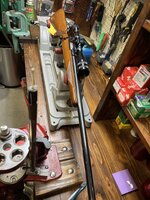I just bought a ruger m77 in 22-250 off my neighbor. It came with a set of dies so I decided to load up some rounds. I'm having issues of the bullet not hitting the rifling unless the bullet is just barely pushed into the neck. Is it more important to have more bullet in the neck or closer to the rifling?













